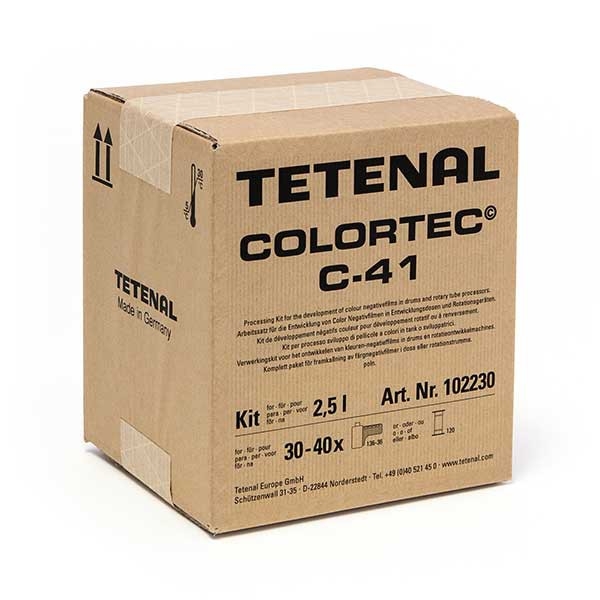

Heater, water agitation pump (for even heat distribution) and thermostat’s temperature probe Everything you need can be bought off Ebay and your local household goods stores. My DIY setup is really simple and very cheap. If you ever have a problematic roll and need to figure out what went wrong – then you have one thing less to take into account.Įven if you are a sworn lomographer you can still benefit from a good and carefree temperature control as it will make your developing techniques repeatable.
C 41 developing free#
In E6 there is more to mess up as you can not only get too dark/too light slides but also color shifts – and there is no fixing in post if you want to use your slides with a projector.Įliminating the need to watch the temperature will free you up to do other elements of the process more accurately and will give you an overall more enjoyable experience. Generally in C41 process wrong temperature can give you under/overdeveloped (equalling to under/overexposed) film. There is a lot to do and you do not want to ruin your photos by making some silly mistake – just because you had too much to do at the same time.īoth C41 and E6 processes are temperature and time sensitive so keeping the temperature right is crucial from the quality standpoint.

You will be busy watching the times, pouring different baths in and out, agitating. If you want to go this route I suggest you ask someone to keep an eye on water temperature for you, at least when you develop for the first time. You just fill your sink with warm water, control the temperature using a thermometer and add hot water when the temperature drops.

There is no doubt that you can successfully develop C-41 film or even E-6 simply using your kitchen sink. I am not sure if they are still available brand new (like it or not analog photography is a dying art), but the used ones I saw for sale tend to be rather expensive. There are commercial devices for so called “rotary development” that go even one step further and also automate agitation process. Please watch the video below and read the post as together they contain the most complete information. It will make your home developing much more consistent and hassle free.
C 41 developing how to#
Here you will see how to build a simple DIY temperature controlled film development container. The temperature control is done by immersing your development tank (often called Paterson tank) in water of correct temperature. You pour your chemicals in and out while trying to keep the temperature at correct level. When developing films in C41 or E6 process at home you normally use a special lightproof tank with a spool containing your film inside. The fact that it requires a tub makes for easy cleanup and portability too-I just stick it all together in the tub and shove it under the sink between uses.Cheap DIY temperature control setup for home film developing in C-41 and E6 processes The TCS-1000 does an excellent job keeping a flat temperature, and the two-bath process is wonderfully streamlined. I like to do a final rinse with Photo-Flo and distilled water to reduce water spots, but that’s it! Up go the negatives, and the whole kit gets a good wash.Īll in all, it couldn’t be easier. In goes the blix, with the same agitation cycle as before, but this time for 8:00 flat. I habitually use warmed water as a stop bath/rinse between the developer and the bleach/fixer, mostly to satisfy my desire to keep the chemicals separated. There’s a generous lag between the end of the first timer and the beginning of the second. CineStill encourages increasing development time by an additional 2% for each 36-frame roll through the used chemicals, so keep notes and do your math. Development takes 3:30 for film shot at box speed, or 4:33 (130% of the time) for a +1 push. Agitate for the first 30 seconds, then once every 30 seconds thereafter. There’s a slight grace period/delay to allow you to pour in the developer, and then you’re off to the races. Pressing and holding the right button activates the timer for the two-bath process.

People seem divided on whether or not this matters, but it doesn’t seem to hurt. I typically start with a pre-rinse with water that has been preheated alongside the chemicals to bring the film up to temperature.


 0 kommentar(er)
0 kommentar(er)
